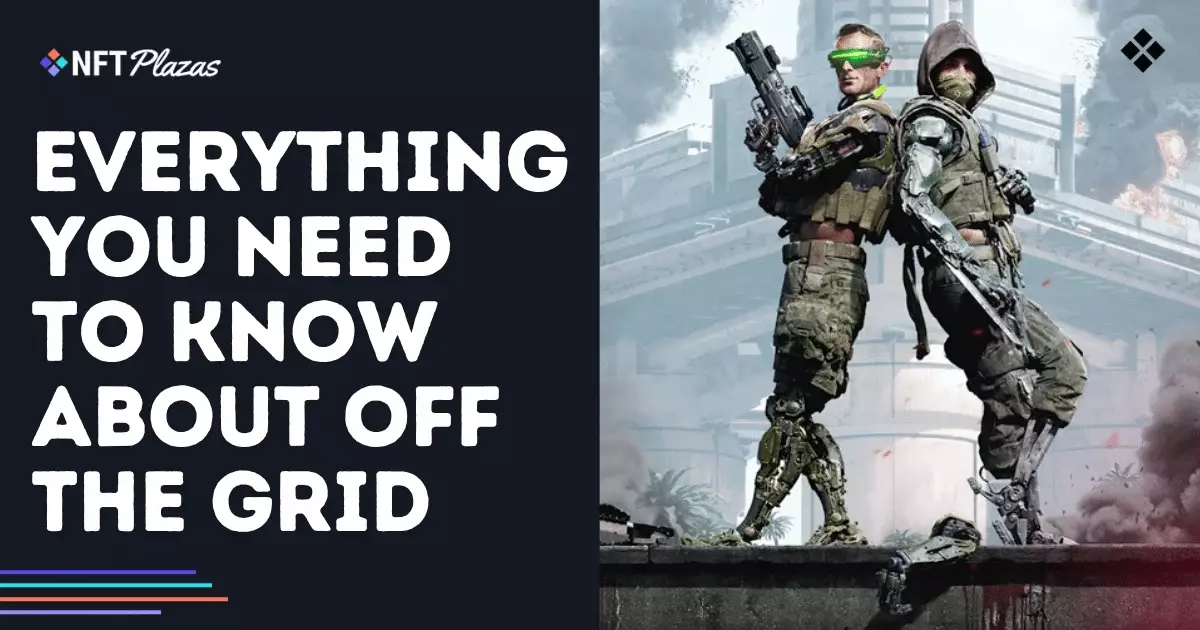In the crowded universe of battle royale games, innovation often struggles to break free from the shackles of familiarity. Off The Grid, however, dares to stand apart by blending traditional last-man-standing mechanics with extraction shooter elements and an ambitious optional blockchain component. While the game’s premise exudes a daring vision, it reveals a fundamental tension between innovation and execution. At its core, it attempts to deliver a fresh experience, but rather than seamlessly revolutionizing the genre, it oscillates between promising novelty and problematic shortcomings.
What makes Off The Grid distinctive is not solely its cyberpunk aesthetic or its narrative depths, but its attempt to redefine in-game ownership through NFTs and cryptocurrencies. This is a bold step, but one fraught with controversy and skepticism. It’s clear that the developers aim to build a player-driven economy—an appealing concept for crypto-enthusiasts—but it risks alienating mainstream players who are wary of blockchain’s association with speculative markets and technical complexity. In this hybrid approach, the game attempts to cater to both traditional gamers and those eager to explore the blockchain frontier. The question is whether it manages to do so without diluting core gameplay or compromising fairness.
The core gameplay is broadly familiar: drop into a map, scavenge for weapons, and fight to be the last survivor or execute strategic extractions. Yet, Off The Grid’s unique cyberlimb system—with customizable augmentations offering offensive and movement advantages—adds a layer of strategic depth. This feature elevates the game beyond a simple shooter, demanding experiments with different limb configurations to suit varying combat scenarios. However, the novelty feels somewhat superficial when the gameplay balance deteriorates under the weight of overpowered cyberlimbs or unbalanced weapons. The race for the most potent cybernetic upgrades can lead to a homogenized meta, where overpowered abilities overshadow tactical diversity.
Despite its visual splendor powered by Unreal Engine 5, the game’s aesthetics can be a double-edged sword. The neon-lit cyberpunk scenery is immersive, but the demanding graphics often result in performance issues, especially on mid-range machines. Frame drops and stuttering disrupt the fluidity that a fast-paced shooter relies upon, highlighting the ongoing challenge of optimizing cutting-edge visuals for a broad audience. While the developers have incorporated several tweaks—like lowering quality settings and enabling FSR or DLSS—the underlying technical issues undermine the experience, especially in high-stakes moments where smooth gameplay is paramount.
Blockchain Integration: Innovation or Obstacle?
The most contentious aspect of Off The Grid is undoubtedly its integration of blockchain technology. The game offers players the opportunity to own assets—such as weapons, skins, and cyberlimbs—as NFTs, recorded securely via Gunzilla’s own GUNZ blockchain. A marketplace exists where these assets can be bought, sold, and potentially traded for real-world currency using GUNZ tokens. For supporters of decentralization and digital ownership, this feature is revolutionary; for critics, it raises questions about sustainability, fairness, and the commodification of in-game items.
Importantly, blockchain features are entirely optional, allowing traditional players to enjoy the core gameplay without engaging with NFTs or cryptocurrencies. However, the optionality doesn’t erase the underlying concern: the existence of a player-driven economy that could skew match fairness, introduce pay-to-win dynamics, or incentivize asset hoarding. The integrity of gameplay should transcend economic speculation, yet in a game so heavily intertwined with blockchain, that ideal seems increasingly difficult to uphold.
The concept of Nodes—virtual validators responsible for decrypting and minting extracted loot as NFTs—adds a new layer of complexity. Early supporters who buy into Nodes can generate GUNZ tokens through validation, creating a speculative economy within the game. While this may appeal to crypto investors, it risks turning what should be a competitive environment into a marketplace driven by economic motives rather than skill. Moreover, the volatility associated with cryptocurrencies naturally casts a shadow over long-term game stability.
Unfinished Business: Balancing Potential with Performance
From a purely technical and gameplay perspective, Off The Grid faces a daunting uphill battle. Early impressions praised its innovative features and immersive cyberpunk universe, but subsequent play revealed significant flaws. Cheating has become rampant, with device-based hacks undermining competitiveness and fairness. Matchmaking often pairs inexperienced players with seasoned veterans, exacerbating frustration and discouraging newcomers.
The game’s combat system, while polished in concept, suffers from certain weapons and cyberlimb abilities that are disproportionately overpowered, skewing the balance and discouraging diverse strategies. Performance issues persist despite Asus, AMD, and NVIDIA optimization efforts—many players report lag, drop in fps, and inconsistent responsiveness, especially during intense firefights or large-scale matches. These problems threaten to tarnish what could have been a groundbreaking experience, turning it instead into a frustrating grind.
Furthermore, developer focus appears skewed towards a dedicated niche of high-end players and crypto investors. This leaves casual or single-player enthusiasts feeling sidelined. The steep learning curve—particularly mastering cyberlimb customization and movement mechanics—compounds the challenge for new entrants. Without meaningful matchmaking improvements and performance patches, the game risks becoming a fragmented playground for the technologically savvy, leaving broader audiences behind.
Despite the promising innovations, Off The Grid remains a work in progress, with a volatile and divided player base. Its success hinges on resolving core gameplay balance issues, addressing cheat prevention, and optimizing performance across hardware configurations. The integrated blockchain features, while cutting-edge, seem more like an experiment than a fully realized, sustainable ecosystem. Whether it can mature into a resilient multiplayer experience that maintains its innovative spirit while delivering fair, fluid gameplay remains to be seen.

